Calving has progressed well on Dairylink Ireland farms and the rate of new arrivals will start to slow down over the next few weeks.
Calf accommodation is well filled up on most programme farms at present and the oldest calves are currently being weaned off milk.
With several participants having a tighter calving profile this year, space is tight in some sheds, as more newborns are arriving in a shorter space of time.
Ideally, newborn calves should not go where older calves have been
This has meant most calves are usually moved to other accommodation shortly after weaning to allow more space to be freed up in the main calf-rearing shed.
Hygiene is critical at this stage in the game because pathogen levels in sheds are high by the start of the third month of calving.
Ideally, newborn calves should not go where older calves have been. Newborn calves should go to a new shed where there has been no calves up to now.
If this is not possible, disinfect pens thoroughly.
Vaccination
Several Dairylink farms also vaccinate later calving cows for rotavirus to help build immunity in calves that are arriving later in the season.
With calving slowing down on Dairylink farms over the next few weeks, thoughts will turn to heat detection and breeding.
It is important to not become complacent in the calf shed with things such as colostrum administration, feeding and beddin
However, Dairylink participants will still have cows calving into the new year, so it is important to not become complacent in the calf shed with things such as colostrum administration, feeding and bedding.
Other important steps that can sometimes be overlooked include keeping teat feeders clean and sterile, having fresh concentrates in front of calves, having straw pushed down in racks or accessible through feed rails, and giving all calves access to a clean water supply.
Weekly round-up
Calving is beginning to slow down on most autumn-calving herds.Maintaining hygiene is critical as calving enters its third month.The oldest calves are being weaned off milk on Dairylink farms.Programme participants are finalising sire selection ahead of breeding.Farmer focus: Richard Marshall, Omagh, Co Tyrone
The 2019 calving season began on Richard Marshall’s farm near Omagh, Co Tyrone, at the start of September and there are 70 cows calved down at present.
Dairylink: keeping on top of calf rearing.
The herd will be well through calving by the end of the year and there are only six cows due to calve down in February and two in March.
Richard has made significant progress in establishing a tighter autumn-calving block.
Some of the reasons for doing this include the desire to have more cows over peak production and in-calf by the spring so they can get to grass early, and to have a more seasonal workload with calf rearing, breeding, drying off, etc.
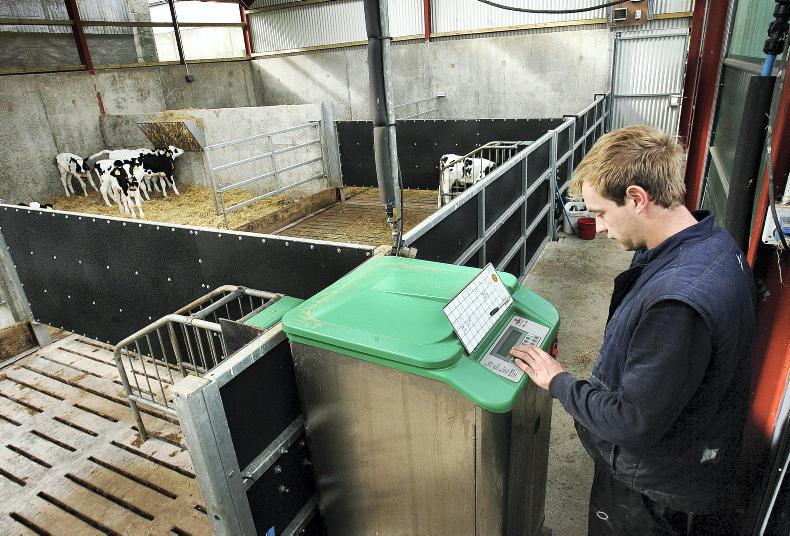
Calves have access to an automatic feeder in each pen.
It is the second season in the new custom-built calf shed on the Marshall farm. Pens are well filled up at present, mainly on the back of TB movement restrictions requiring all bull and beef-sired calves to stay on the farm.
Calves have access to an automatic feeder in each pen. All calves have EID collars and readers on the automatic feeder record individual intakes. Calves are on a feed plan which will gradually bring them down over two weeks for weaning.
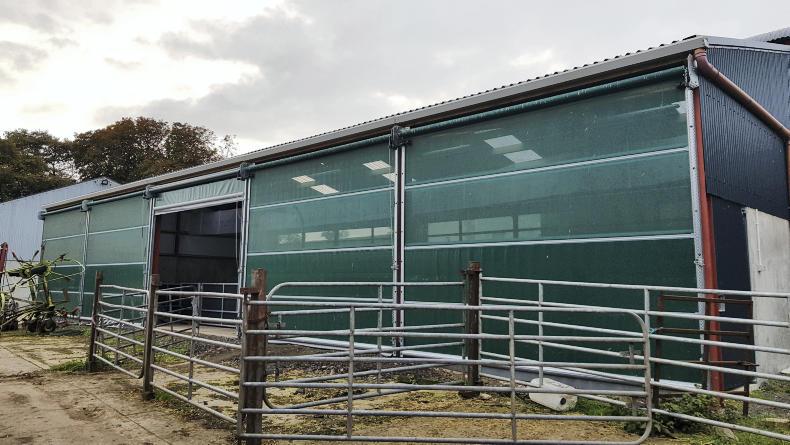
The calf shed has an open front with windbreaks on rollers.
This will start for the oldest calves from next week and once they are off milk they will be moved across the yard to another shed. Richard will steam clean and disinfect each group pen before newborn calves are brought in.
Dry cows
Earlier this autumn, Richard got a mineral analysis carried out on silage that was earmarked for dry cows.
The results showed that the forage had a high dietary cation anion balance (DCAB) at over 300meq/kg.
A high DCAB can be an issue in dry cow silage, as it puts cows at greater risk of developing milk fever after calving.
Third-cut grass silage also has a higher DCAB value
It is typically a result of silage being made from ground that received potassium in the form of slurry and/or compound fertiliser. Third-cut grass silage also has a higher DCAB value.
This has been rectified by supplementing dry cows with magnesium chloride through the TMR.
This lowers DCAB, which stimulates the cow to mobilise calcium from her own body reserves coming up to calving.
Richard is happy with this, as he has had no issues with milk fever so far this year.
Sire selection
Richard is finalising sire selection for the upcoming breeding season, which is due to start at the beginning of December.
He is picking bulls from the UK-based profitable lifetime index (PLI) and is mainly selecting on fertility index and components.
His first draft list includes bulls with a fertility index ranging from 7.5 to 16.9.
Predicted transmitting ability (PTA) for butterfat ranges from 0.19% to 0.32% and goes from 0.12% to 0.18% for protein.
Sires include Praser, Commend, Goodwhone and Brook.
Richard is also looking at sires like Ronaldo who is very strong on fertility and milk solids.
Read more
Dairylink: calves weaned in new shed in Tyrone
Calf rearing in full swing in Co Down
Calving has progressed well on Dairylink Ireland farms and the rate of new arrivals will start to slow down over the next few weeks.
Calf accommodation is well filled up on most programme farms at present and the oldest calves are currently being weaned off milk.
With several participants having a tighter calving profile this year, space is tight in some sheds, as more newborns are arriving in a shorter space of time.
Ideally, newborn calves should not go where older calves have been
This has meant most calves are usually moved to other accommodation shortly after weaning to allow more space to be freed up in the main calf-rearing shed.
Hygiene is critical at this stage in the game because pathogen levels in sheds are high by the start of the third month of calving.
Ideally, newborn calves should not go where older calves have been. Newborn calves should go to a new shed where there has been no calves up to now.
If this is not possible, disinfect pens thoroughly.
Vaccination
Several Dairylink farms also vaccinate later calving cows for rotavirus to help build immunity in calves that are arriving later in the season.
With calving slowing down on Dairylink farms over the next few weeks, thoughts will turn to heat detection and breeding.
It is important to not become complacent in the calf shed with things such as colostrum administration, feeding and beddin
However, Dairylink participants will still have cows calving into the new year, so it is important to not become complacent in the calf shed with things such as colostrum administration, feeding and bedding.
Other important steps that can sometimes be overlooked include keeping teat feeders clean and sterile, having fresh concentrates in front of calves, having straw pushed down in racks or accessible through feed rails, and giving all calves access to a clean water supply.
Weekly round-up
Calving is beginning to slow down on most autumn-calving herds.Maintaining hygiene is critical as calving enters its third month.The oldest calves are being weaned off milk on Dairylink farms.Programme participants are finalising sire selection ahead of breeding.Farmer focus: Richard Marshall, Omagh, Co Tyrone
The 2019 calving season began on Richard Marshall’s farm near Omagh, Co Tyrone, at the start of September and there are 70 cows calved down at present.
Dairylink: keeping on top of calf rearing.
The herd will be well through calving by the end of the year and there are only six cows due to calve down in February and two in March.
Richard has made significant progress in establishing a tighter autumn-calving block.
Some of the reasons for doing this include the desire to have more cows over peak production and in-calf by the spring so they can get to grass early, and to have a more seasonal workload with calf rearing, breeding, drying off, etc.

Calves have access to an automatic feeder in each pen.
It is the second season in the new custom-built calf shed on the Marshall farm. Pens are well filled up at present, mainly on the back of TB movement restrictions requiring all bull and beef-sired calves to stay on the farm.
Calves have access to an automatic feeder in each pen. All calves have EID collars and readers on the automatic feeder record individual intakes. Calves are on a feed plan which will gradually bring them down over two weeks for weaning.

The calf shed has an open front with windbreaks on rollers.
This will start for the oldest calves from next week and once they are off milk they will be moved across the yard to another shed. Richard will steam clean and disinfect each group pen before newborn calves are brought in.
Dry cows
Earlier this autumn, Richard got a mineral analysis carried out on silage that was earmarked for dry cows.
The results showed that the forage had a high dietary cation anion balance (DCAB) at over 300meq/kg.
A high DCAB can be an issue in dry cow silage, as it puts cows at greater risk of developing milk fever after calving.
Third-cut grass silage also has a higher DCAB value
It is typically a result of silage being made from ground that received potassium in the form of slurry and/or compound fertiliser. Third-cut grass silage also has a higher DCAB value.
This has been rectified by supplementing dry cows with magnesium chloride through the TMR.
This lowers DCAB, which stimulates the cow to mobilise calcium from her own body reserves coming up to calving.
Richard is happy with this, as he has had no issues with milk fever so far this year.
Sire selection
Richard is finalising sire selection for the upcoming breeding season, which is due to start at the beginning of December.
He is picking bulls from the UK-based profitable lifetime index (PLI) and is mainly selecting on fertility index and components.
His first draft list includes bulls with a fertility index ranging from 7.5 to 16.9.
Predicted transmitting ability (PTA) for butterfat ranges from 0.19% to 0.32% and goes from 0.12% to 0.18% for protein.
Sires include Praser, Commend, Goodwhone and Brook.
Richard is also looking at sires like Ronaldo who is very strong on fertility and milk solids.
Read more
Dairylink: calves weaned in new shed in Tyrone
Calf rearing in full swing in Co Down






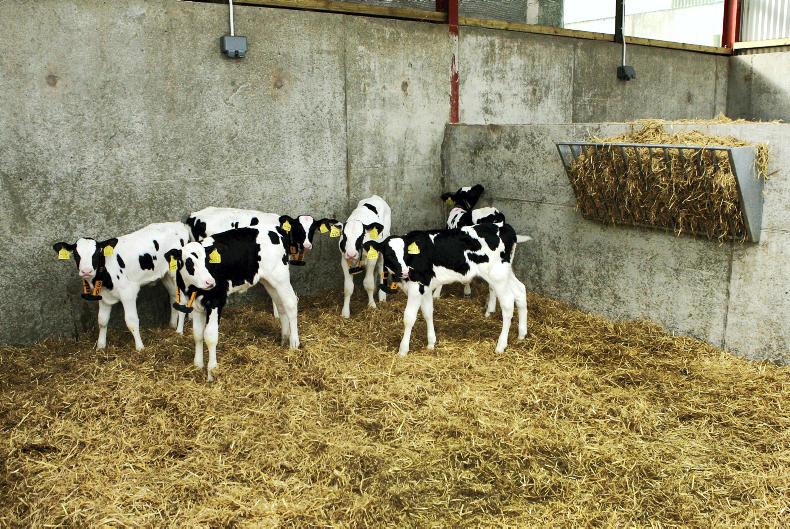

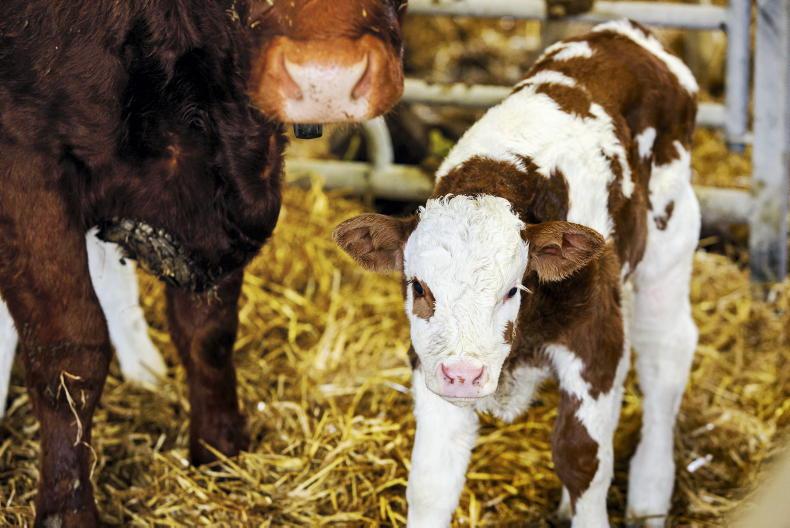
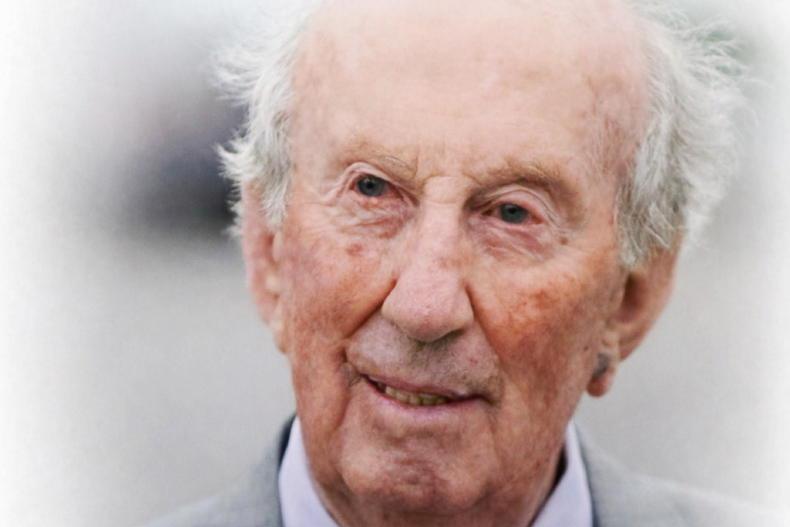
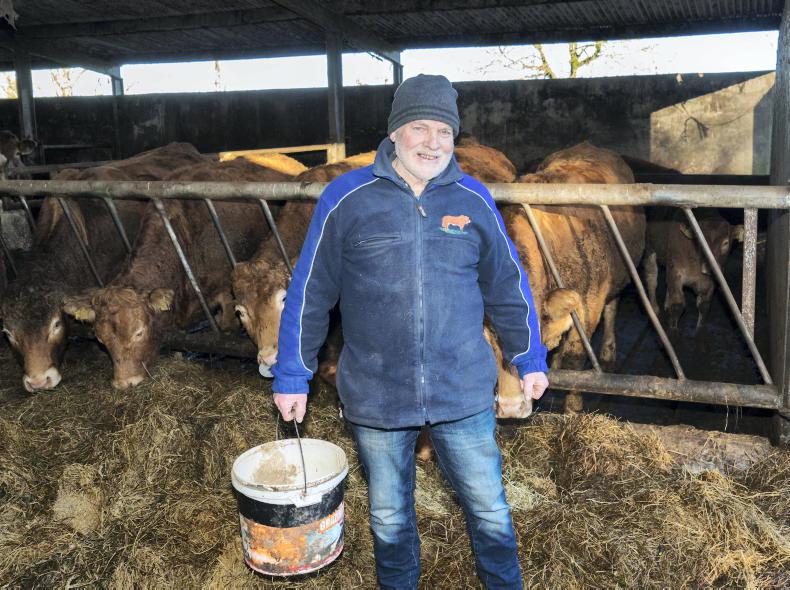
SHARING OPTIONS